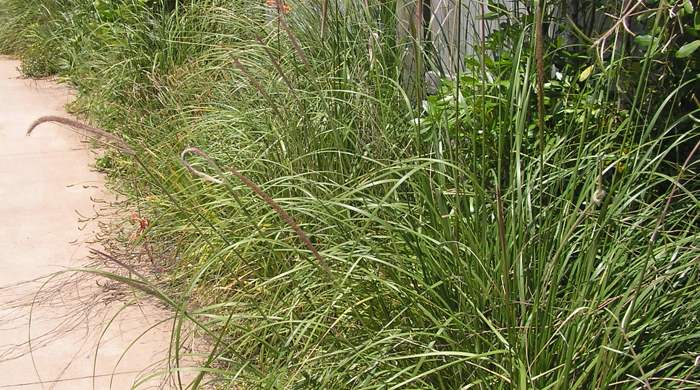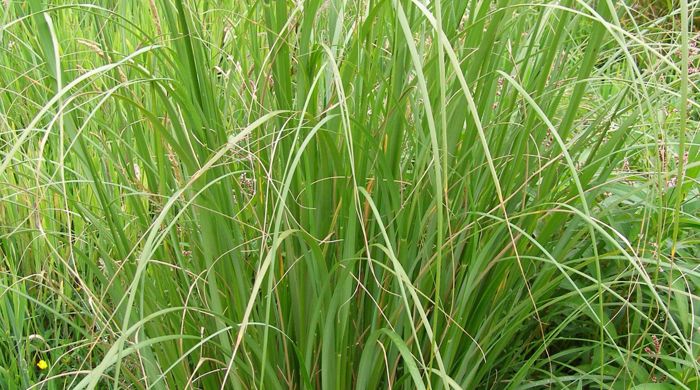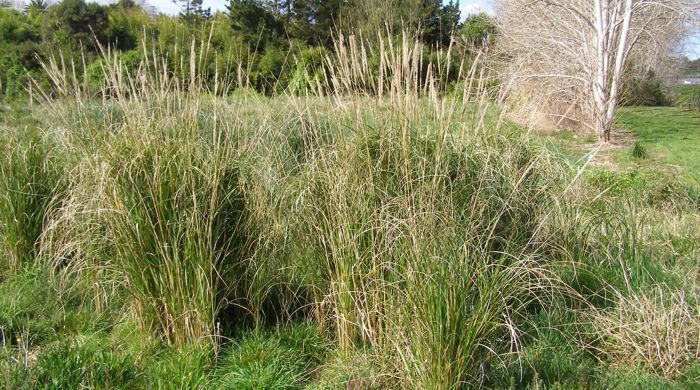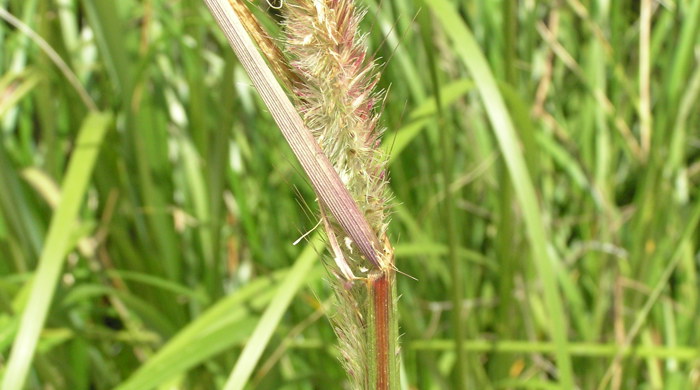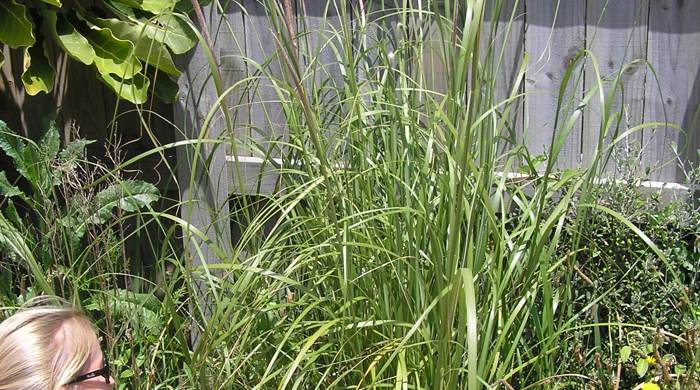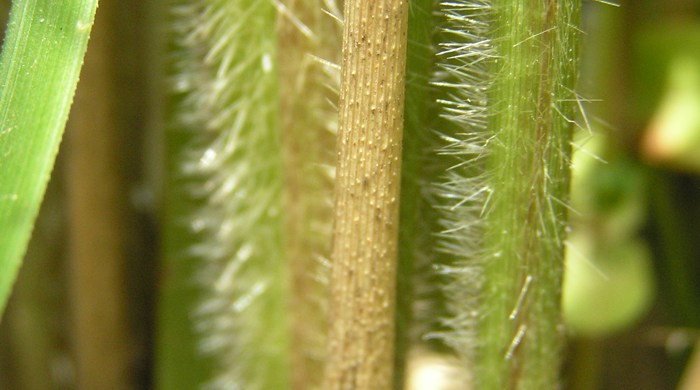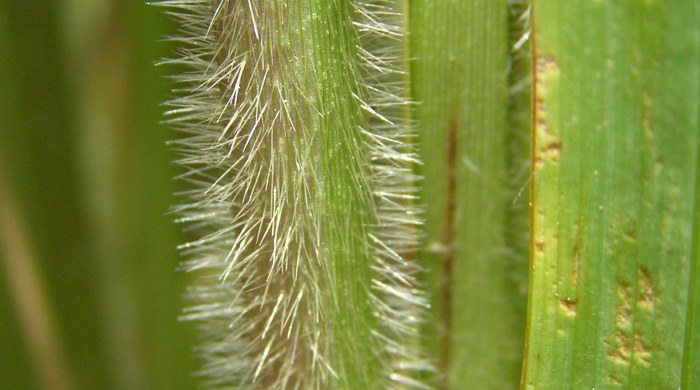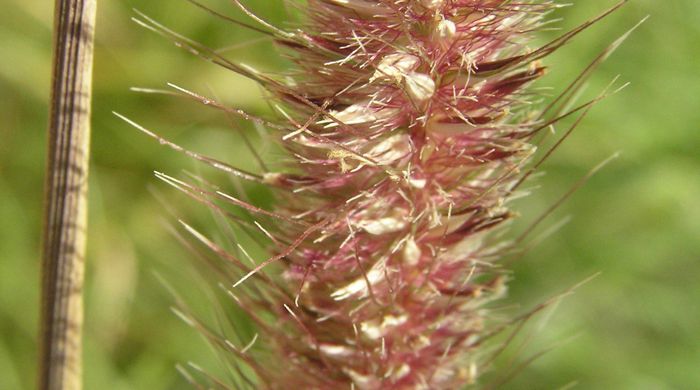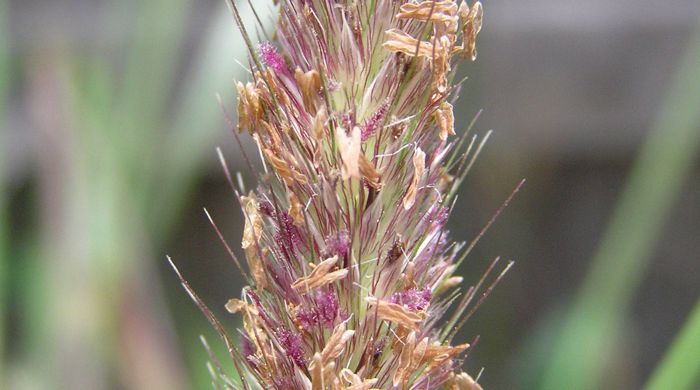Cenchrus macrourus syn. Pennisetum macrourum
African feather grass
Also known as:
Veld Grass
Family: Poaceae
Origin: South Africa
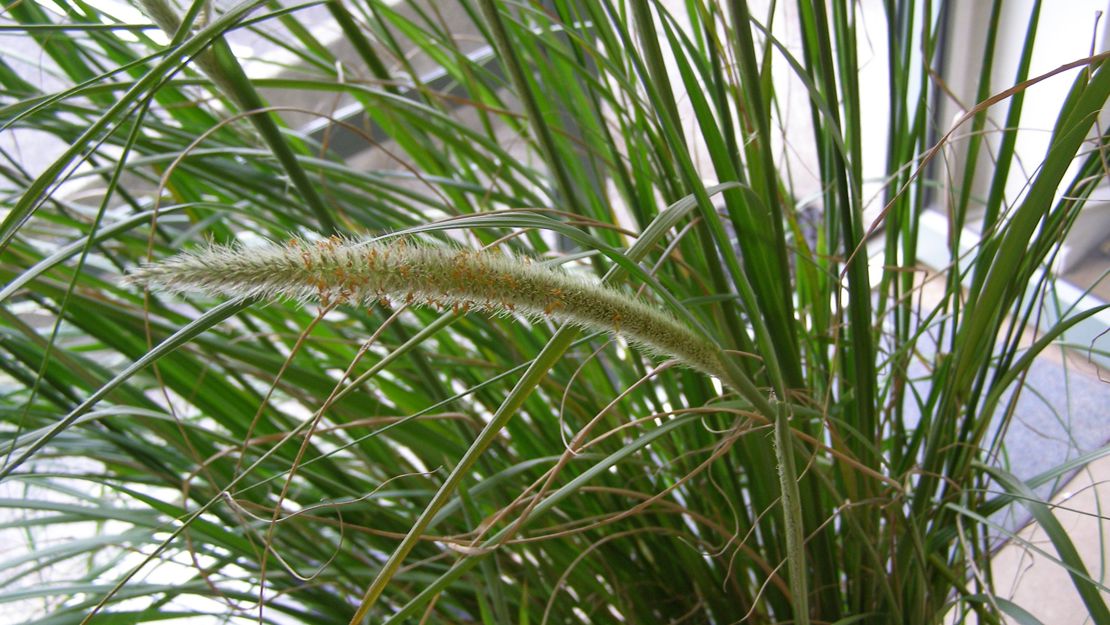
Regional Pest Management Plan (RPMP) status
- Whole region — Eradication
- Hauraki Gulf Controlled Area Notice pest
General description
Clump-forming perennial grass < 2 m tall. Roots are deep and fibrous. Stems are erect, purple/white and covered in fine hairs. Leaves are light green with darker green underside, strongly ribbed and tough. Flowerhead is narrow, cylindrical and spike-like.
What you need to know
To help protect our environment:
- You must not breed, distribute, release or sell African feather grass within the Auckland region.
- You must not plant African feather grass within the Auckland region.
Auckland Council will control African feather grass at all sites where it is known to occur.
If you see African feather grass anywhere in the Auckland region, please report it to Auckland Council at pestfree@aucklandcouncil.govt.nz.
Habitats
Pastures, roadsides, streambanks, swamps, wasteland, urban areas, cemeteries, gardens.
Dispersal
Seeds dispersed by wind, water and attachment to animal pelts. Vegetative spread from rhizome fragments.
Impact on environment
Aggressive invader. Particularly threatens native species in grassland, scrubland, wetland and sand-dune habitats. Dense clumps may restrict access to natural areas.
Control
Site management
Unpalatable to livestock, do not graze. Do not treat when seed mature as increases contamination risk. Fire hazard after spraying. Follow-up spray at least 6 monthly until regrowth ceases. Do not replant with monocots for 2 years after initial spray. Where possible replant with dicot groundcover spp. to allow follow-up haloxyfop spraying.
Recommended approaches
Do not attempt to undertake control of this species. Please report to Auckland Council.
Caution: When using any herbicide or pesticide please read the label thoroughly to ensure that all instructions and safety requirements are followed.
